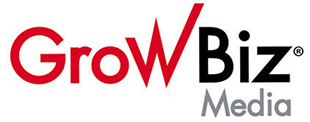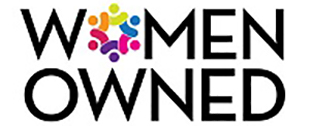In the bustling intersection of digital design and advertising, a new era of business communication has emerged. The power of visually engaging content has been harnessed to convey compelling narratives, shaping consumer perceptions and influencing their decisions. This article delves into this dynamic realm, exploring how high-quality design elements can enhance advertising impact, the strategic use of color and typography, the importance of responsive designs, and the influence of visual hierarchy in guiding consumer behavior. It further highlights the importance of staying abreast of modern design trends and the pivotal role of professional collaboration in crafting advertisements that resonate with audiences while driving optimal engagement and conversion.
The Connection between Digital Design and Advertising
In today’s digital age, the connection between digital design and advertising is more profound than ever before. High-quality designs not only capture the viewer’s attention but also help to communicate the core message of the ad effectively. A well-considered design can evoke emotions, create desire, and ultimately lead the viewer to take action – converting a potential customer into a loyal one. Moreover, with the rise of social media platforms, digital designs play a pivotal role in viral advertising, where aesthetic appeal can dramatically boost sharing and engagement rates. Therefore, investing time and resources into digital design can significantly enhance the impact and reach of your advertising campaigns.
The Role of Color and Typography
Color and typography are more than aesthetic enhancements – they are the essential tools in the arsenal of advertisers. The strategic use of color can stir emotions and spark associations with a brand. For instance, red can signify passion and urgency, while blue can inspire trust and loyalty. Similarly, the right typography can amplify an ad’s message and brand identity, creating an instant connection with viewers. Consider an advertisement for a high-end jewelry store. If the ad uses a script font, it may evoke feelings of elegance, sophistication, and exclusivity. This font style, with its flowing and handwritten characteristics, can reflect the craftsmanship and attention to detail put into each piece of jewelry. On the other hand, the use of a serif font, known for its traditional and reliable feel, might suggest longevity and trustworthiness. This could reassure potential customers about the quality and durability of the jewelry, implying that the pieces are timeless and worth the investment. Therefore, understanding and leveraging these elements of design can be the key to creating memorable and impactful advertisements.
The Enhancement of Responsive Design
Responsive design is a critical aspect of digital advertising that ensures that your content is accessible and engaging on a variety of devices. When your design adapts smoothly to different screen sizes, potential customers are more likely to have a positive interaction with your advertisement. This increases the likelihood of them staying on your site longer, exploring more content, and potentially making a purchase. Furthermore, as search engines prioritize mobile-friendly sites, having a responsive design can also improve your advertising SEO. In essence, responsive design enhances user experience, boosts engagement, and optimizes your ad’s visibility in digital spaces.
The Impact of Visual Hierarchy
Visual hierarchy in digital design strategically organizes elements to guide the viewer’s eye, influencing how they process information and make decisions. By using size, color, and placement, designers can highlight key components of an advertisement, directing the viewer’s attention to the most important information first. This hierarchy can guide consumers down a predetermined path, subtly steering them towards a call to action. Furthermore, a well-executed visual hierarchy improves readability and comprehension, ensuring that your brand’s message is effectively communicated. Ultimately, visual hierarchy plays a crucial role in shaping consumer behavior, making it a powerful tool in successful digital advertising.
The Leverage of Digital Design Trends
Staying attuned to the latest digital design trends can be instrumental in crafting successful advertising strategies. Contemporary design trends, such as minimalism, data visualization, and augmented reality, are transforming the advertising landscape, offering unique ways to captivate audiences and convey messages. For example, minimalist designs with clean lines and ample white space can create a sophisticated and modern look, appealing to a quality-conscious demographic. Data visualization, on the other hand, can help distill complex information into easily digestible, visually engaging infographics, enhancing audience understanding and retention. Lastly, augmented reality offers immersive experiences, taking user engagement to a new level and providing opportunities for innovative, interactive advertisements.
In conclusion, digital design plays a transformative role in shaping today’s advertising landscape. Its ability to capture attention, evoke emotions, and guide consumer behavior is unparalleled. Every element—color, typography, responsive design, visual hierarchy, and staying on top of current design trends—works in unison to create advertisements that are not only visually appealing but effectively communicate your brand’s message. However, effectively leveraging these elements requires a deep understanding of design principles and contemporary trends. This is where working with a professional can make a significant difference. Collaborating with a design professional, like RBK Advertising + Design, can help you ensure that your advertisements are not only aesthetically pleasing but also strategically crafted to optimize consumer engagement and conversion. As the digital landscape continues to evolve, the alliance of digital design and advertising will only become more pivotal, making it imperative for businesses to invest in professional design expertise.
Rachelle Wilber is a freelance writer living in the San Diego, California area. She graduated from San Diego State University with her Bachelor’s in journalism and media studies. She tries to find an interest in all topics and themes, which prompts her writing. When she isn’t on her porch writing in the sun, you can find her shopping, on the beach, or at the gym.
Design stock image by McLittle Stock/Shutterstock



